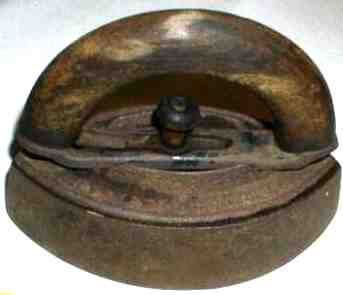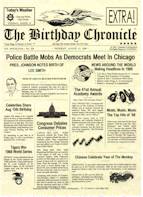
|
 Neat brush arbor on the square. This is a web page under construction. Come back and visit with us over the coming weeks and contribute your old photos and stories as you can. 
|
||







Snow's BBQ. According to a Texas Monthly article, "The best barbecue in Texas is currently being served here at Snow�s BBQ, Snow's BBQ is located in Lexington at 516 Main Street and is open only on Saturdays from 8:00 a.m. until the barbeque is sold out.

Snow�s proprietor, Kerry Bexley, was a former rodeo clown who worked as a blending-facility operator at a coal mine. Snow�s pit master, Tootsie Tomanetz, was a woman in her early seventies who worked as the custodian of the middle school in nearby Giddings

Ocean of firewood ready to keep Snow's BBQ Pits going.

Lexington's Cattle Commission comes alive on Saturday mornings. At 12:30 every Saturday, a cattle auction is held here at the Lexington Livestock Commission grounds.










Early-Day Business 3 miles East of Lexington on FM609




FOR GREAT DEALS ON INDIAN AND OLD WEST RELICS, INDIAN AND OLD WEST BOOKS, VINTAGE
BELT BUCKLES, COKE COLLECTIBLES, AND OTHER GREAT GIFT IDEAS, SEE LINKS ALONG THE LEFT
SIDE OF THE PAGE!
Ocean of firewood ready to keep Snow's BBQ Pits going.

Lexington's Cattle Commission comes alive on Saturday mornings. At 12:30 every Saturday, a cattle auction is held here at the Lexington Livestock Commission grounds.










Early-Day Business 3 miles East of Lexington on FM609




FOR GREAT DEALS ON INDIAN AND OLD WEST RELICS, INDIAN AND OLD WEST BOOKS, VINTAGE
BELT BUCKLES, COKE COLLECTIBLES, AND OTHER GREAT GIFT IDEAS, SEE LINKS ALONG THE LEFT
SIDE OF THE PAGE!
Lexington's Cattle Commission comes alive on Saturday mornings. At 12:30 every Saturday, a cattle auction is held here at the Lexington Livestock Commission grounds.










Early-Day Business 3 miles East of Lexington on FM609




FOR GREAT DEALS ON INDIAN AND OLD WEST RELICS, INDIAN AND OLD WEST BOOKS, VINTAGE
BELT BUCKLES, COKE COLLECTIBLES, AND OTHER GREAT GIFT IDEAS, SEE LINKS ALONG THE LEFT
SIDE OF THE PAGE!









Early-Day Business 3 miles East of Lexington on FM609




FOR GREAT DEALS ON INDIAN AND OLD WEST RELICS, INDIAN AND OLD WEST BOOKS, VINTAGE
BELT BUCKLES, COKE COLLECTIBLES, AND OTHER GREAT GIFT IDEAS, SEE LINKS ALONG THE LEFT
SIDE OF THE PAGE!
FOR GREAT DEALS ON INDIAN AND OLD WEST RELICS, INDIAN AND OLD WEST BOOKS, VINTAGE BELT BUCKLES, COKE COLLECTIBLES, AND OTHER GREAT GIFT IDEAS, SEE LINKS ALONG THE LEFT SIDE OF THE PAGE!
![]()
![]()

FOR MORE LEONARD KUBIAK TEXAS HISTORY WEBPAGES, CLICK ON THE FORTTUMBLEWEED HOMEPAGE LINK AT THE BOTTOM OF THIS WEBPAGE.
![]()
![]()
Don't forget to bookmark our site and come back often!!
Thanks for visiting!!
 For questions or comments, send me
an Email at lenkubiak.geo@yahoo.com
For questions or comments, send me
an Email at lenkubiak.geo@yahoo.com
Click on the deer to add
This Page To Your list of webpage
Favorites.
Copyright � 2011. All rights
reserved by Leonard Kubiak. Fort Tumbleweed™ and forttumbleweed™ are trademarks of Leonard Kubiak. No Part of this Website nor any
of it's contents may be
reproduced in any manner without written permission.
 Return to the Fort Tumbleweed Home Page
Return to the Fort Tumbleweed Home Page

























